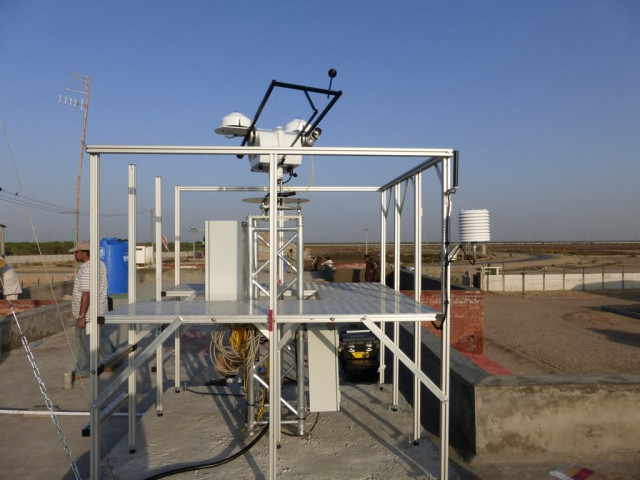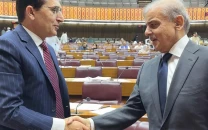Renewable energy mapping gets underway in Pakistan
World Bank initiative aims to measure Pakistan’s potential for solar, wind and biomass energy

The project, supported by the World Bank’s Energy Sector Management Assistance Program (ESMAP), will measure Pakistan’s potential for solar, wind and biomass energy, using ground-based data collection, GIS analysis, and geospatial planning.
"The result of months of computer-intensive modeling, these maps represent a significant improvement over previous efforts due to computational advances over the last decade," said the World Bank in its press release, adding that the maps are based on satellite data and global atmospheric models covering a 10 year period.

Multi-year mean (2000-2012) of daily Global Horizontal Irradiance (GHI) for Pakistan in kWh/m2 [Note: preliminary, unvalidated results]. SOURCE: WORLD BANK
Initial maps of solar and wind potential for Pakistan have already been presented to the government and other stakeholders after the conclusion of the first phase of the project.
However, the World Bank notes, these modelling results must be compared against actual solar and wind measurements taken from ground-based stations to get to the “level of confidence required by commercial developers".
In a bid to improve the models, leading to the production of solar and wind charts with a margin of error of as low as 5%, the ESMAP mapping initiative aims to collect ground-based measurement data for a period of up to two years.
According to the World Bank, the ground-based data can in turn be used by governments to set tariffs and guide the strategic development of renewable energy, and by commercial developers to carry out feasibility studies.
The World Bank has been working in coordination with the country’s Alternative Energy Development to make the mapping project a reality. The programme falls under a broader Renewable Energy Resource Mapping initiative by the World Bank covering 12 countries.
Interestingly, Pakistan is the first of the 12 country-level activities to reach the milestone of commissioning a measuring station, according to the World Bank.
“A high precision solar measuring station was inaugurated at the site of the Quaid-e-Azam Solar Park, near Bahawalpur in Punjab on October 18, 2014. This park is home to the first of many solar farms that are being planned in Pakistan, with 100 megawatts of capacity currently being constructed and due to begin generating electricity in early 2015,” said the release.
In total, nine solar stations will be installed in Pakistan, of which two (in Bahawalpur and Islamabad) will be ‘high precision’ stations. “The other seven standard precision stations are also very accurate, but are more suitable for remote locations, requiring only weekly cleaning and getting their small power requirement from a solar panel,” according to the World Bank.
Further, the initiative will soon extend to incorporate its wind measurement campaign with around 15 sites planned across Pakistan.
The $22.5 million, five-year ESMAP Renewable Energy Resource Mapping programme covers wind, solar, small hydro and biomass mapping.
Besides Pakistan, work is currently underway in Ethiopia, Indonesia, Lesotho, Madagascar, Malawi, Maldives, Nepal, Papua New Guinea, Tanzania, Vietnam, and Zambia.



















COMMENTS
Comments are moderated and generally will be posted if they are on-topic and not abusive.
For more information, please see our Comments FAQ